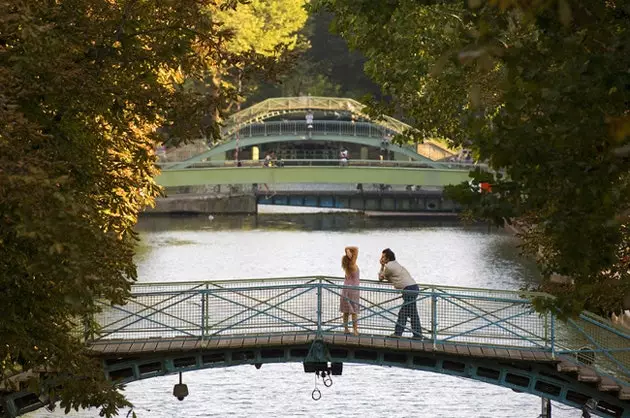
The micro-universe of the Canal
Paris, 1938. In the shade of huge plane trees and chestnut trees, a narrow artificial watercourse crosses the neighborhoods of the industrious north of Paris while daily life goes on as normal on its banks. A bucolic setting, but also painful , where the lost souls of Paris between the wars unfold, people – criminals, prostitutes – who do not seek to earn a living, but rather to make a dent in it. Such is the existence of Renée and Pierre, Raymonde and Edmund, the two leading couples of Hotel du Nord , the tragic film that Marcel Carne directed in 1938 and which is part of the Parisian cinematographic mythology, especially that of the neighborhoods that 'revolve' around the Canal Saint-Martin . The workshops and industries that are intuited in the film have disappeared or have moved to the periphery, so what we find there today is a movie set in the most optimistic of senses.
The Canal Saint-Martin is 4.5 km long , half underground, and construction began in 1805 by order of Napoleon Bonaparte as part of his program to modernize the city. With it, running water was brought to many houses and the navigability and transport of goods between the rivers was facilitated. Ourcq and Sena . The works, which lasted 20 years, were financed with a special tax on wine, a very popular drink among the youth, a public that has replaced the proletarian and the misfits on the banks of the canal, especially during sunny afternoons.
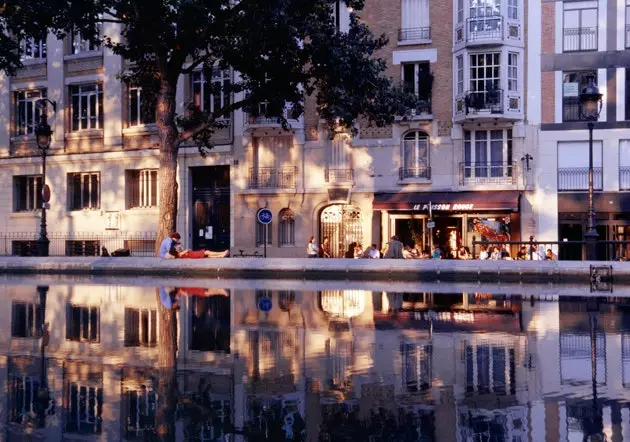
The Canal Saint-Martin is about 4.5 km long
Indeed, this is one of the areas of the city where twenty-somethings feel most comfortable, but also the most creative artists and liberal professionals who inhabit it. The reason is not only to be found in the almost perfect aesthetics, but also in the fact that around it are the most interesting centers of artistic creation and exchange of ideas in the city, installed in what were once factories along the canal: Point Éphémère Y Le Comptoir General They are two recommended visits.
To this must be added some beautiful and original shops, trendy bars and restaurants. The best example to illustrate this scenario is the Hotel du Nord –today included in the list of heritage buildings in France–, where instead of seedy rooms they offer food and drinks for young 'fools' , bourgeois bohemians, people who set trends and who feel comfortable recalling that Seedy, romantic, black and white Paris.
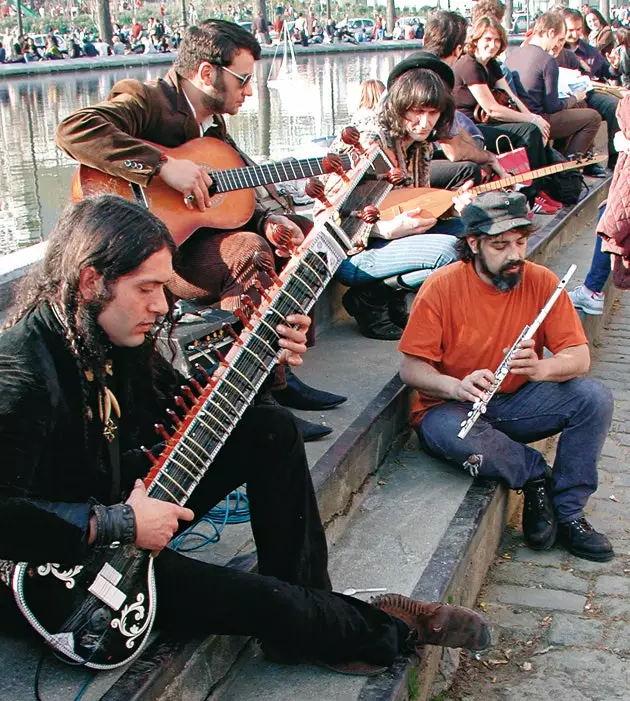
'Bobos', artists, hipsters... The channel is territory for youth and art
Until the 1980s, the Canal maintained the purpose for which it was born, to facilitate transportation. Since then, it is the tourist boats and pleasure boats that experience the passage through the nine locks and two swing bridges and overcome the 25 meter difference in level between the Bastille Arsenal and the Parc de La Villette. The little iron bridges (in the style of the Eiffel Tower) that cross it help the traveler to **emulate that Paris of beautiful lovers in the attitude of a perfect picnic** –baguette, pâté, Burgundy wine and checkered tablecloth– in the shade of a century-old plane tree . The perfect plan if the weather is good, even if due to logistical needs you have to leave aside the detail of the tablecloth....
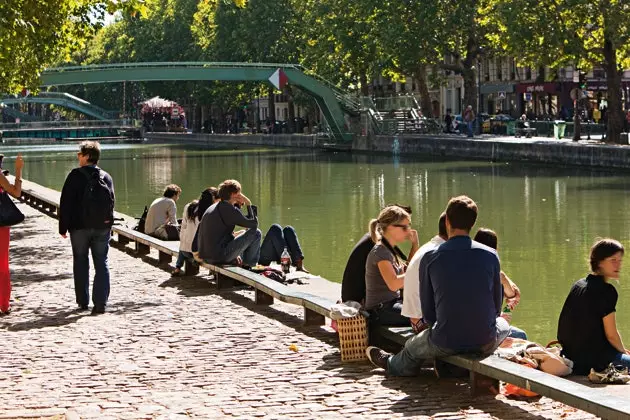
The tradition of 'pique nique' on the Quai de Valmy
BASSIN AND PARC DE LA VILLETTE From the Volgograd Place , the channel is renamed Bassin de la Villette , a large 70 meter wide pond that can be crossed for free courtesy of the ‘boatman’ service offered by the mk2 theaters , a Seventh Art emporium with rooms and shops on both banks. The promenade for pedestrians, cyclists or skaters also widens and appears as lively or more lively than the canal itself.
As there is more space, at this point part of the leisure offer takes place in the water. In addition to the cruises, at the Villette Nautical Base (reservation: tel. +33 01 4240 2990) you can rent kayaks, boats and pedalos to explore the area with more freedom of movement . But the peak moment of the Bassin comes in summer, from June to the end of August, when the area is fitted out with everything that is needed to enjoy it. as if it were a real beach : solariums, swimming pools to cool off, petanque fields... and in the evenings, concerts and more for the pleasure of both Parisians and tourists.
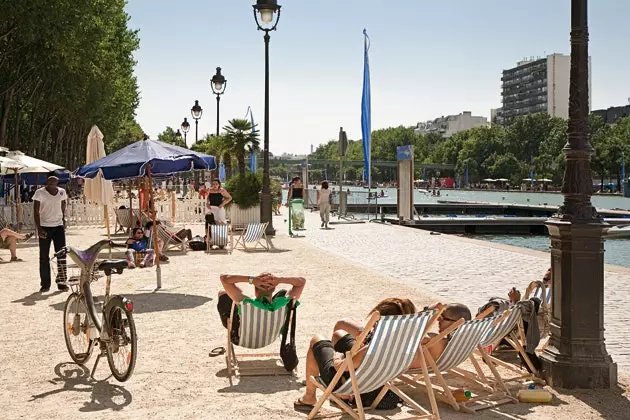
Enjoying the sun on the beach of Bassin de la Villette
The final stretch of this route between the Seine and the Ourcq is the La Villette park , devised in the 1980s by Franco-Swiss artist Bernard Tschumi within President François Mitterrand's plan to beautify the city. Crossed by the waters of the Canal de l'Ourcq, la Villette occupies the space of what was the public slaughterhouse , transforming the site into one of the largest green areas in Paris (in total, 55 hectares), second only to the Père-Lachaise Cemetery. In it you can visit, or at least admire its exterior, various informative museums such as the hipertecnológica Cite des Sciences et de l'Industrie , an ideal plan for those who go with children, or the Geode , the Imax cinema whose exterior surface is covered with 6,433 steel triangles that shine as bright as the day it opened a quarter of a century ago. Tschumi's project includes various folies, apparently useless structures painted red scattered on both sides of the canal that gain coherence over the years and give unity to the ensemble of buildings and landscape.
On the right bank you can visit the only slaughterhouse building that was not demolished, the Ox Hall , where there are several exhibition and show rooms, a restaurant and a bookstore. Beside him is the City of Music , the work of Christian de Portzamparc, Pritzker Prize 1994, which will soon be joined by the new headquarters of the Philharmonie de Paris , by Parisian Jean Nouvel.
BELLEVILLE, PARIS SEEN FROM ABOVE
Multicultural and youthful, Belleville is a popular neighborhood in continuous renewal by the new immigrant lifeblood. Even so, it must be included as one of the most Parisian neighborhoods in the city. Edith Piaf lived in it , the mythical singer whose peculiar accent is identified as typical of the Belleville of that time. Legend has it that Piaf was born in the shadow of a streetlight on Rue de Belleville . Outside as she was her arrival in the world, a plaque of her remembers her at number 72 of the street.
Also, in Menilmontant (5 Rue Crespin du Gast) can be visited a private museum dedicated to the character with the soundtrack of her songs. The most pronounced physical feature of the neighborhood is its strategic location, perched on a hill that rivals Montmartre in height. From some of its steep streets you can see the best panoramic views of the city. The palm in this sense is taken by those who enjoy themselves from the romantic gazebos in Buttes-Chaumont Park , almost vertical, built by blow of dynamite by order of Napoleon III, although it must be recognized that the views from the park of Belleville are not short either.
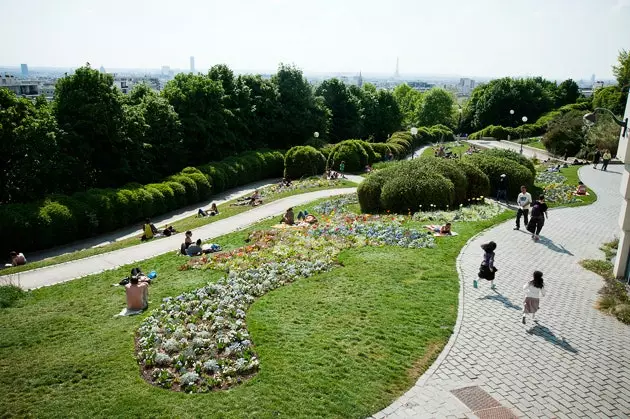
Belleville park, a whole locus amoenus
Fewer fountains and special effects than Buttes-Chaumont but more popular, in Belleville there are many plans to make. For example, visiting the ecological Maison de l'Air with its surreal turbines on the roof and whose doors are held lively dance sessions or open-air theater. On the lawn, among flowers and vineyards of the varieties Pinot Meunier and Chardonnay , hundreds of people spend the hours facing the afternoon sun, playing chess, ping pong or simply cooling off in the fountains and ponds.
Multiculturalism can be distinguished in the area's commerce. Chinese trinket shops, African handicraft shops or tea houses alternate in narrow alleys and in other wider ones, such as the chaotic Boulevard de Belleville , where you can see beautiful rationalist architecture buildings or dilapidated synagogues strongly protected against possible attacks. Each Tuesday and Friday morning the promenade welcomes the stalls of farmers in the region who sell their products. The march of the neighborhood must be looked for in the Oberkampf and Menilmontant streets , where most of the cocktail bars and concert halls are concentrated. They are hangouts for rockers and lovers of electronics, rude but soulful people, with little in common with the sophisticated Paris of the Champs Elysées. Stuck to each other, the nineteenth Charbon Coffee and the renewed New Casino are two of the best known.
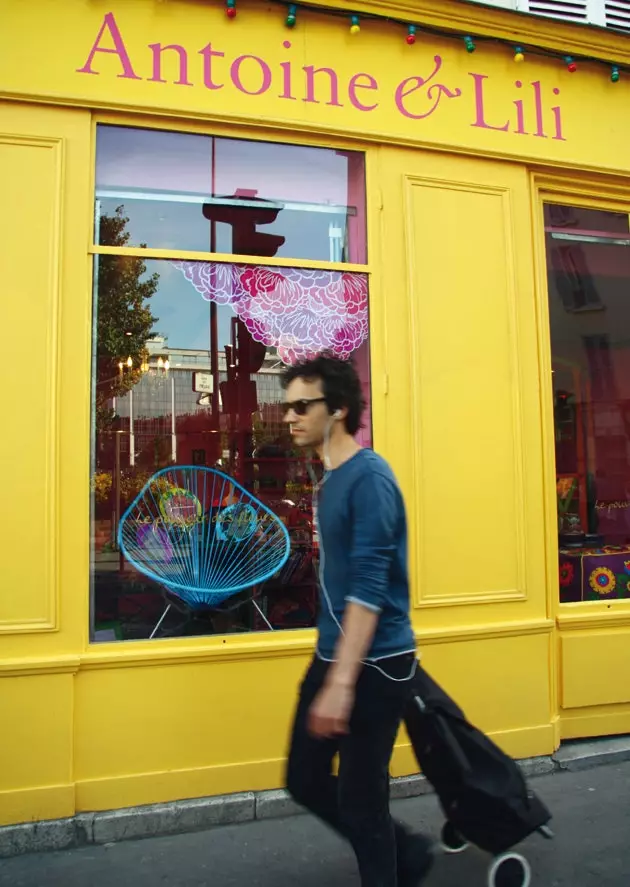
Antoine et Lili, one of the vintage shops
going up from Oberkampf to the north are The Menilmontant Ateliers (42 Rue des Panoyaux), a building entirely dedicated to the production of art in the broadest sense. The building cannot be visited except on open days, which are usually held in September. those days you can see how and where 21st century Parisian artists and craftsmen work . Very close to here, a few streets further north, is one of the most interesting cultural and leisure institutions in Paris, La Bellevilloise , at 21 Rue Boyer. It is an exhibition and events center that has a night club and a bar-restaurant, The ** Halle aux Oliviers **, where among centuries-old olive trees you can take the sunday brunch listening to live jazz, dining during the week or having a cocktail before retiring, the latter a liturgy that can also be performed on the terrace bar, weather permitting. La Bellevilloise was the first cooperative created in France, in 1877, a few years after the controversial Paris Commune. Political and cultural training was given there and, well into the 20th century, it was an important service center for the neighborhood community of the 19th and 20th districts.
*** You may also be interested in...**
- 100 things about Paris you should know
- The Paris of Edith Piaf
- Keys to make the perfect Parisian picnic
- How to become a real Parisian 'bobo'
- The gastrohipster route of Paris
- Paris Guide
- Everything you should know about Paris
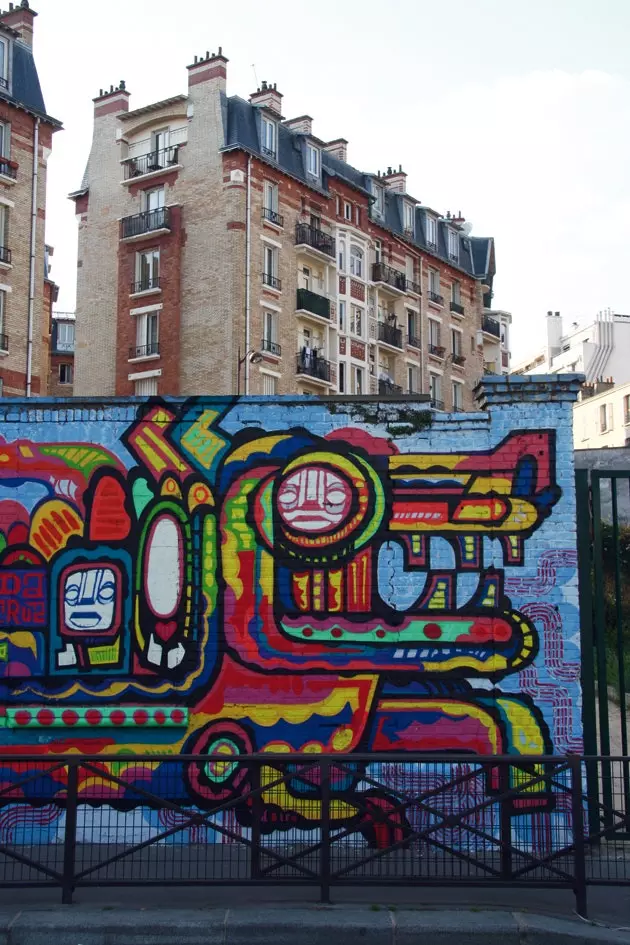
The typical decoration of the 19th and 20th districts
